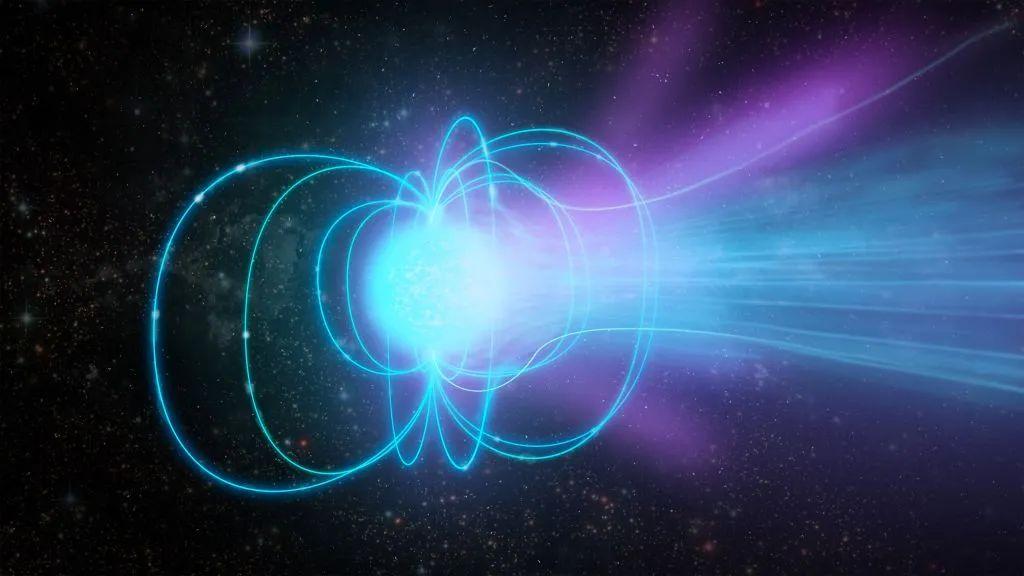Why do we eat popcorn at the movies?
我们为什么会在看电影时吃爆米花?
Soft percussion and a toasty scent mark the violent transformation of tough seeds into cloud-like puffs。 This is the almost magical process of popcorn-making。 But how did we actually end up with this whimsical food? All the corn eaten today isderivedfroma tall grass called teosinte, which Indigenous people in what is now southern Mexico began selectively breeding about 9,000 years ago。 An ear of teosinte originally yielded somewhere between 5 and 12 small kernels, each with a hard shell called a pericarp。
And some varieties had a fantastic feature: if they reached a certain temperature, their kernels exploded。 Popcorn kernels pop because water and starch are sealed tightly within the pericarp。 When heated, the moisture inside becomes steam。 As it expands, it increases theinternalpressure and the solid starch transforms into a gel-like substance。 The pressure finally overcomes the pericarp’s resistance and it bursts— the steam and starch expanding to form a foam that quickly cools and dries in the air。
From this small-scale explosion also rush forth the compounds that give popcorn its powerful aroma。 Ancient Indigenous American people cultivated other maize varieties with larger, moreflavourfulkernels and thinner pericarps。 But the hard-shelled,poppablevariety also persisted and spread through parts of the Americas。
轻声的噼啪、焦焦的香味代表着坚硬的种子骤变成了云朵般的膨化小零食。这就是制作爆米花近乎神奇的过程。但我们究竟是怎么想出这种大开脑洞的食物的呢?如今我们吃的所有玉米都源自一种名为“墨西哥野玉米”的高大草本,现今墨西哥南部的土著人大约在9000年前就已经开始选择性培育这种植物了。每一个墨西哥野玉米能产出5至12颗玉米粒,每一颗玉米粒都有一个硬壳,称为“果皮”。有些品种有个很神奇的特质:一旦达到了特定温度,它们的内核就会爆开。爆米花的内核会爆开是因为水和淀粉紧紧地密封在果皮内。一旦加热,内含的水分就会变成水蒸气。内核膨胀的同时,内压强会增加,固态淀粉也转化为了胶状物质。最终压强超过了果皮的阻力,于是就爆开了——水蒸气和淀粉膨胀形成了一个泡沫,在空气中快速冷却、干燥。这场小型爆炸也把化合物推了出去,让爆米花释放出强烈的香味。古代美洲土著人培育出了其他玉米品种,具有更大、更有味道的内核及更薄的果皮。但硬壳、可爆的品种也流传了下来,席卷了美洲的部分地区。
derive fromsth
— phrasal verb with derive verb UK /dɪˈraɪv/ US /dɪˈraɪv/
to come from something来自于,源自
internal
adjective UK /ɪnˈtɜː.nəl/ US /ɪnˈtɝː.nəl/
existing or happening inside a person, object, organization, place, or country 体内的;内部的;国内的
By the time Europeancolonisersarrived in the late 1400s, Indigenous American people were preparing and eating corn in myriad manners。 Popcorn wasn’t a major part of their diets。 But it popped up in European accounts, which described the preparation of “toasted” or “parched” corn and its use in some Aztec feasts and celebrations。 Despite initial reluctance,coloniserseventually began cultivating— and popping— corn。 The methods they used at first were inconsistent and messy。 But with the invention of “wire over the fire” baskets around 1837, the process got easier。
Soon, popcorn picked up steam and exploded with a reputation as a low-cost, entertaining snack。 Over the following decades, it became a mainstay at events and hundreds of recipesmaterialised, mixing popcorn with sweet andsavouryingredients。 But popcorn hadn’t yet reached its height。 At the 1893 World’s Fair, an inventorshowcasedthe first popcorn machine: a wagon that tossed popcorn in seasoning as it cooked。 Soon enough, vendors could be seen roving US city streets with similar machines。
在欧洲殖民者于15世纪后期抵达之时,美洲土著已经能花式烹制、食用玉米了。爆米花不是他们日常总是会吃的食物。但是它被欧洲人记载了下来,记录了如何制作“烤制”或“烘干”玉米和它在阿兹特克宴会和庆典上的用途。虽然一开始不情不愿,殖民者最终还是开始培育,也开始“爆”玉米了。他们最初采用的方式参差不齐、一塌糊涂。但随着1837年左右烧烤篮的发明,整个过程都简单了一些。不久爆米花就风靡了起来,以廉价、有趣的小零食名声大噪。在接下来的几十年里,它成为了各大活动的中流砥柱,上百个配方层出不穷,给爆米花加上甜甜咸咸的配料。但这还不是爆米花的巅峰。在1893年的世界哥伦比亚博览会上,一位发明家展示了第一台爆米花机:一辆在烹制时把爆米花丢进调味料的小车。不久后,小贩们就带着这样的机器出现在了美国的街头巷尾。
materialize
verb [ I ] (UK usuallymaterialise) UK /məˈtɪə.ri.ə.laɪz/ US /məˈtɪr.i.ə.laɪz/
If an object materializes, it appears suddenly.突然出现
showcase
noun [ C ] UK /ˈʃəʊ.keɪs/ US /ˈʃoʊ.keɪs/
a container with glass sides in which valuable or important objects are kept so that they can be looked at without being touched, damaged, or stolen(玻璃)陈列柜,展示橱
verb [ T ]
UK /ˈʃəʊ.keɪs/ US /ˈʃoʊ.keɪs/
to show the best qualities or parts of something 展示…的优点;充分展示
Interestingly, movie theatres were some of the only Americanvenueswhere you wouldn’t find popcorn at the time。 Many cinema operators saw their establishments as part of a grand theatre traditionat oddswith popcorn— what they considered a messy, low-brow street food。 However, when the Great Depression hit in 1929, movies provided the public with a welcome distraction。 And they had recently gone from being silent and subtitled to acquiring sound, making them accessible to a wider audience, including non-literate people。
At about five or ten cents a bag, popcorn proved an inexpensive luxury for moviegoers, so theatre operators pounced on the money-making opportunity。 Today, a medium bag of popcorn might cost about 60 cents to make, but retail for around $6— a 1,000%markup。 Popcorn sales generate nearly 40% of all movie theatre profits, helping to offset the high prices that theatres pay film studios。 Over the last century, people throughout the Americas continued popping corn, and different preparations took hold in markets worldwide。
When microwavable popcorn was launched in the 1980s, popcorn popped off yet again。 Dozens of kinds of popcorn are now grown in the US。 Different strains assume distinctive shapes when their kernels explode, most commonly taking so-called “mushroom” and “butterfly” forms。 And they’ve been bred for supremepoppability。 Over the last century, the amount that popcorn expands has doubled: now, kernels can reach up to 50 times their original size upon popping。 Not to be corny, but popcorn’s come a long way。
有趣的是,电影院还是当时美国为数不多不售卖爆米花的场所。许多电影院老板认为他们的产业作为大剧院传统的一部分,与爆米花格格不入——他们认为爆米花是一种邋遢、没品味的街头食品。但当1929年大萧条袭来时,电影让大众可以愉悦地逃避现实。不再是默片加上字幕,而是配上音效,更容易触及更广泛的受众,包括无读写能力人士。一包爆米花大概五美分或十美分,为影迷提供了价格低廉的享受,所以影院老板牢牢抓住了这个吸金机会。如今,中份爆米花的制作成本大约为60美分,但售价约为6美元——1000%的加成。爆米花收入大约占电影院总利润的40%,部分抵消了电影院支付给电影制片方的高昂费用。过去的一个世纪里,美洲的人们持续爆着玉米,各种做法席卷了世界各地的市场。上世纪80年代,微波炉爆米花问世,爆米花掀起了新一轮风潮。美国现在培育着琳琅满目的爆米花品种。不同品种在内核爆开时会呈现出不同的形状,最常见的是“蘑菇形”和“蝴蝶形”。它们被培育出了最佳的“可爆能力”。过去百年,爆米花膨胀的程度已经翻番:现在的内核已经可以爆出原始大小的高达50倍体积。虽然这种说法“黍”不胜“黍”,但爆米花取得了突飞猛进的发展。
venue
noun [ C ] UK /ˈven.juː/ US /ˈven.juː/
the place where a public event or meeting happens (公共事件的)发生场所,举行地点;会场
at odds (with someone/something)
idiom:indisagreement与…不一致;与……不和,与……争吵;
markup
noun [ C ] UK /ˈmɑːk.ʌp/ US /ˈmɑːrk.ʌp/
the amount by which the price of something is increased before it is sold again加价幅度
限 时 特 惠: 本站每日持续更新海量各大内部创业教程,一年会员只需98元,全站资源免费下载 点击查看详情
站 长 微 信: lzxmw777






